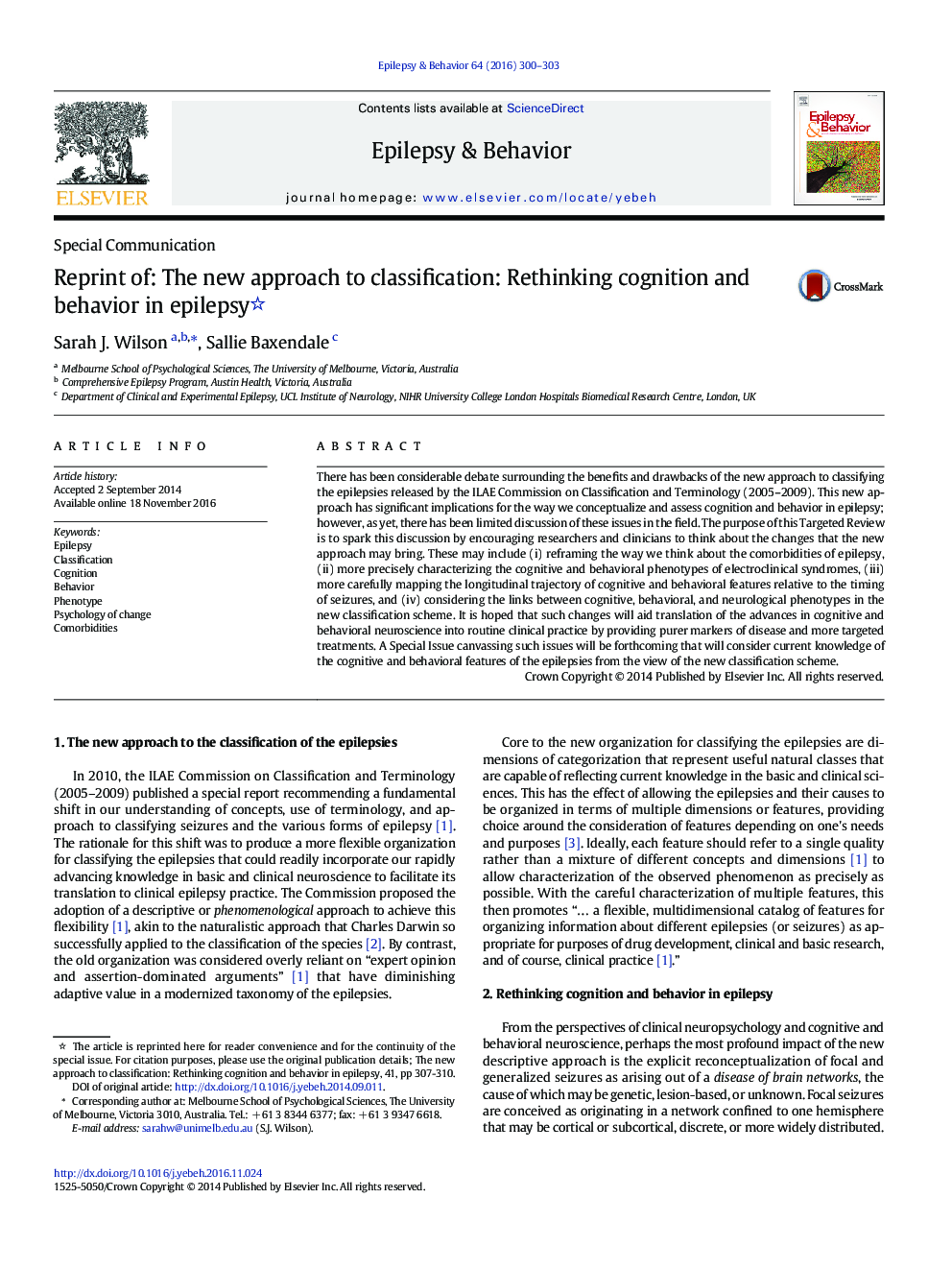| Article ID | Journal | Published Year | Pages | File Type |
|---|---|---|---|---|
| 5628378 | Epilepsy & Behavior | 2016 | 4 Pages |
There has been considerable debate surrounding the benefits and drawbacks of the new approach to classifying the epilepsies released by the ILAE Commission on Classification and Terminology (2005-2009). This new approach has significant implications for the way we conceptualize and assess cognition and behavior in epilepsy; however, as yet, there has been limited discussion of these issues in the field. The purpose of this Targeted Review is to spark this discussion by encouraging researchers and clinicians to think about the changes that the new approach may bring. These may include (i) reframing the way we think about the comorbidities of epilepsy, (ii) more precisely characterizing the cognitive and behavioral phenotypes of electroclinical syndromes, (iii) more carefully mapping the longitudinal trajectory of cognitive and behavioral features relative to the timing of seizures, and (iv) considering the links between cognitive, behavioral, and neurological phenotypes in the new classification scheme. It is hoped that such changes will aid translation of the advances in cognitive and behavioral neuroscience into routine clinical practice by providing purer markers of disease and more targeted treatments. A Special Issue canvassing such issues will be forthcoming that will consider current knowledge of the cognitive and behavioral features of the epilepsies from the view of the new classification scheme.
